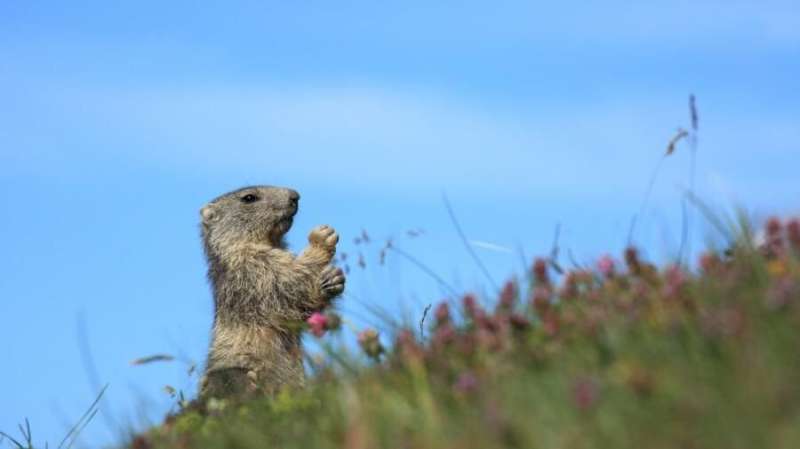Climate change has long-term impact on species adaptability

Historic climate change events can have a lasting impact on the genetic diversity of a species, reveals a new study published in Current Biology. This unexpected finding emerged from an analysis of the alpine marmot's genome.
An iconic animal known to tourists and mountaineers, the alpine marmot is a large rodent exquisitely adapted to cold climates. Since the disappearance of its ice-age habitat, the alpine marmot has resided in high-altitude meadows in the Alps.
In this new study co-led by the Francis Crick Institute, an international team of scientists sequenced the genomes of alpine marmots living in three sites in the French and Italian Alps, and found that the animal's genetic diversity is among the lowest of wild mammals. By reconstructing the marmot's genetic past with the help of fossil records, they discovered that it lost its genetic diversity during the last ice age as a consequence of multiple climate related adaptations.
"We would not have expected the genetic diversity of alpine marmots to be so low," says Toni Gossmann, first-author of the paper and researcher at the University of Sheffield and Bielefeld University in Germany. "They have a large population size, and we found little genetic evidence of inbreeding. But ironically, the very adaptations that helped them survive have trapped them in a state of low genetic diversity."
A slow metabolism was advantageous to marmots during the ice age, enabling them to build up large fat reserves that could help them survive through hibernation. Similarly, marmots that invested in a small number of 'high quality' offspring, rather than having lots of offspring who wouldn't survive the harsh conditions, passed their genes on to the next generation. Over time, a slower breeding cycle and lower mutation rate caused the gene pool to shrink.
As the ice-age ended around 12,000 years ago, the animals were forced to retreat to the high Alps to escape the warming climate. This lead to a 'bottleneck effect' and meant that the surviving marmots were even more genetically similar. Surprisingly, they have not recovered from this bottleneck over time.
Even though alpine marmots are abundant in number, being genetically similar to each other means that they could struggle to adapt to and survive new environmental conditions such as the introduction of a new disease, or further changes in climate.
"If genetic variation is important for future adaptation, then it's not enough to consider current population size, you need to consider life history to get the full picture," says John Welch, Lecturer in Genetics at the University of Cambridge, and co-author of the study.
Markus Ralser, Crick senior group leader and head of the Charité Institute of Biochemistry, who led the study, adds: "We should take the results of the study seriously, as we can see similar warnings from the past. In the 19th century, the passenger pigeon was one of the most abundant land birds in the Northern Hemisphere, yet in spite of its high numbers, it was completely wiped out within a few years. A large population isn't necessarily safe from extinction in the face of climate change."
A next step for the research would be to investigate more closely other animals that survived the ice age. This could reveal other species trapped in a state of low genetic diversity, that would be more vulnerable to climate change and other environmental changes.
More information: Toni I. Gossmann et al, Ice-Age Climate Adaptations Trap the Alpine Marmot in a State of Low Genetic Diversity, Current Biology (2019). DOI: 10.1016/j.cub.2019.04.020
Journal information: Current Biology
Provided by The Francis Crick Institute




















